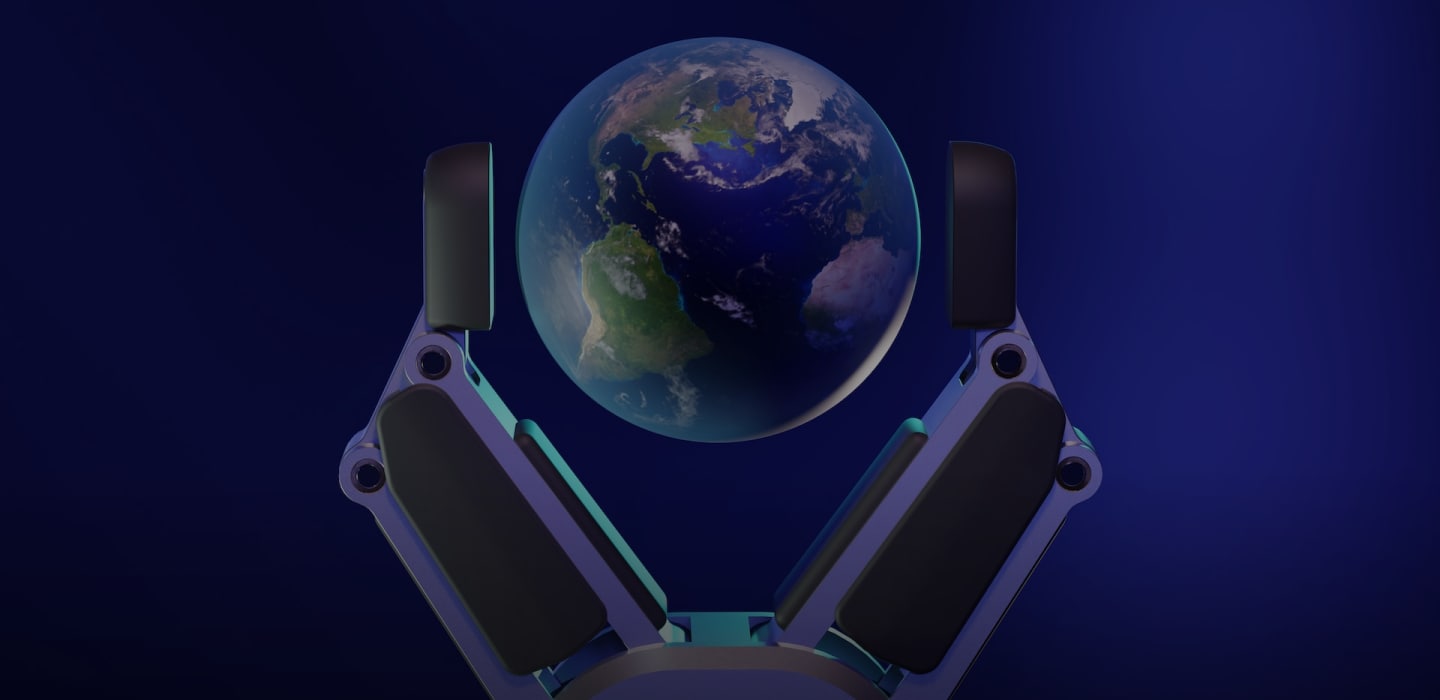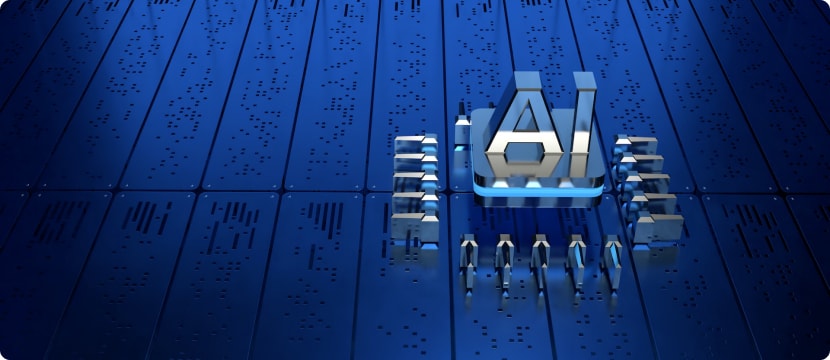

Prasad emphasizes the evolution of AI technology and how it is transforming various industries today. AI-enabled technologies like Computer Vision and NLP help improve customer experience by identifying valuable information about customers, partners, and markets. He also discusses concerns about copyright ownership of content created by generative AI platforms and shifts focus to the importance of data privacy and security in the digital age. Read on to how AI has and will progress to define how we live harmoniously.
The web series “Person of Interest”, aired a few years ago, showed an AI-driven platform called “The Machine”, which combined face recognition with data pulled from multiple sources, including social media, phone calls, messages, emails and emails from other agencies to predict future crimes. The Machine’s nemesis, “Samaritan”, went a step ahead and was even able to manipulate outcomes.
Sounds futuristic, something that belongs to the world of fiction? The truth is we are nearer to that end state than we think. Artificial Intelligence, or AI, is evolving by the day, from the early purpose-built AI, which was primarily rule-driven, to intelligent platforms today, which apply knowledge and skills that it has gained to different contexts, similar to how human intelligence applies to various situations.
ChatGPT, DALL-E and a host of other conversational and generative AI platforms are bringing AI to the common people, who use it as a creative aid for personal and professional activities. With new masterpieces like The Next Rembrandt1 and generated voice and music2 being created by generative AI platforms3, a question arises of copyright4 and who owns the created content.

The AI Evolution: From Rule-based Expert Systems to Deep Learning and Beyond
Computer scientist John McCarthy first used the term Artificial Intelligence during a Dartmouth Conference in the 1950s, where computer scientists and researchers from various disciplines discussed the potential of AI and the possibility of building machines that could think and act like humans.
The last decades of the 20th century saw a resurgence in AI with the development of machine learning (ML) algorithms. ML-enabled systems learnt to process and analyze data, leading to the development of predictive models and decision-making systems, marking the beginning of Big Data management.
With machine learning evolving thanks to the advances in computing power and data storage and management capabilities, more sophisticated AI systems were created which could process vast amounts of data using neural networks that mimicked the human brain.
The past decades have seen AI integrate with other emerging technologies like cloud computing, automation, IoT and Blockchain, to name a few. To cite a few use cases, AI is used to automate processes, enhance decision-making, and improve customer experiences through optimized supply chain management, automated customer service, and enhanced fraud detection5.

Unleashing The Potential Of AI Today For Enhanced Business Performance
Today’s organizations generate vast volumes of structured and unstructured data, including valuable information about your customers, partners, and markets. AI-enabled technologies like Computer Vision and NLP can identify, extract, and process these data into meaningful insights.
Predictive analytics enabled by powerful ML algorithms are used to analyze these insights to identify patterns and predict future trends and events. NLP also allows computers to understand and respond to human inputs like gestures and speech, offering personalized support and service. These technologies enable companies to make informed decisions, improve performance, and provide customized customer service and support.

Unlocking The Future Potential Of AI-Enabled Automation, Robotics, And Personalization
A PwC Global Artificial Intelligence Study6 predicts a potential US$15.7tr contribution to the global economy by 2030 from AI. AI is expected to drive greater product variety, with increased personalization, attractiveness and affordability over time, resulting in product enhancements and stimulating consumer demand.
Productivity gains across industry sectors, including healthcare, automotive, financial services, retail, technology, communications, entertainment, manufacturing, energy and logistics, will be realized from the increasing use of AI to automate processes, including the use of robots and autonomous vehicles, augmenting existing resources and improving consumer demand through personalized AI-enhanced products and services.
The field of robotics is seeing significant advancements, with robots becoming more sophisticated, learning from their environment, and adapting to new situations while performing a more comprehensive range of tasks and interacting with humans more naturally. Autonomous vehicles are in various development and deployment stages and will soon be a common sight on the roads and corporate campuses.

Building Trust And Mitigating Bias Through Responsible AI
AI is the defining technology of our age, with industries using AI in some form. AI is transforming the marketplace for consumers, businesses, and society. Humans and machines collaborate closely, reducing the cycle time of AI-driven innovations coming into the mainstream.
Far-reaching negative impacts of biased learning include gender-biased hiring, racial discrimination during judicial sentencing, and denial of healthcare claims. Companies must realize that while AI is intelligent, it is still a machine that learns based on the data it is trained on.
As AI systems scale and evolve, there is a need for a continual feedback loop between business users and developers to ensure the system is functioning as per the evolving expectations and objectives. Development teams need to build inherent controls based on inputs from business users which can identify opportunities for improvement. These controls could be in the form of appropriate baselines that monitor the functioning and accuracy of the algorithms and look for unwanted bias or deviations while learning from new data or situations.
Organizations need to understand the importance of assurance and control of AI systems and develop a responsible AI framework that addresses the constraints, liabilities and potential downsides of AI and applies a defined governance structure that can mitigate and manage the same. This strengthens confidence in how the AI systems make decisions and builds trust in their outputs.
Loved what you read?
Get practical thought leadership articles on AI and Automation delivered to your inbox


Loved what you read?
Get practical thought leadership articles on AI and Automation delivered to your inbox
Embracing AI For A Better Future
While AI is redefining how employees do their jobs, it is also automating routine and redundant tasks, possibly resulting in loss of employment. Organizations and employees both need to invest in retraining programs that leverage the use of AI rather than delaying or fighting the adoption of AI at their workplaces.
Disclaimer Any opinions, findings, and conclusions or recommendations expressed in this material are those of the author(s) and do not necessarily reflect the views of the respective institutions or funding agencies
- https://www.theguardian.com/artanddesign/2016/apr/05/new-rembrandt-to-be-unveiled-in-amsterdam
- https://techcrunch.com/2016/09/09/googles-wavenet-uses-neural-nets-to-generate-eerily-convincing-speech-and-music/
- https://www.wipo.int/wipo_magazine/en/2017/05/article_0003.html
- https://www.cmswire.com/digital-marketing/is-your-ai-generated-content-protected-by-us-copyright/
- https://www.infosys.com/services/incubating-emerging-technologies/documents/hybrid-ai-opportunity.pdf
- https://www.pwc.com/gx/en/issues/data-and-analytics/publications/artificial-intelligence-study.html



